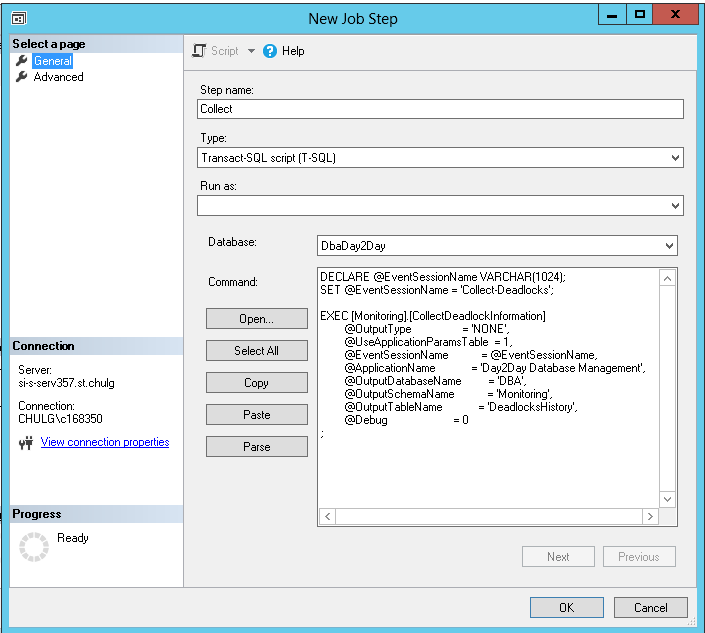

- #Sql server deadlock 256 how to
- #Sql server deadlock 256 pdf
- #Sql server deadlock 256 pro
- #Sql server deadlock 256 code
#Sql server deadlock 256 pdf
The book he co-authored with Ted Krueger ( b| t), Troubleshooting SQL Server – A Guide for the Accidental DBA, is available as a free PDF and has an entire chapter on this subject. Jonathan Kehayias gets into it some in his post The Accidental DBA (Day 29 of 30): Troubleshooting Deadlocks, which is just a start. This topic goes well beyond what I’m going for in this post.
#Sql server deadlock 256 how to
There’s no single right answer on how to view deadlocks, so do what works best for you.
#Sql server deadlock 256 pro
Jonathan Kehayias ( b| t) talks about viewing them in SQL Sentry Plan Explorer Pro in his post Graphically Viewing Extended Events Deadlock Graphs. This is how I look at it from XEvents and my monitoring software. For me, I’m very happy just looking at the XML output to see the details. However, this is just a summary list of your recent deadlocks, it’s not the details. It’s enough to look for trends, know if a deadlock was one you expected, and other basics.
#Sql server deadlock 256 code
You know the code involved on each side, the tables and applications involved, etc. The details of this script give you a great overview of the deadlock. If you don’t care and just want the script, email me. However, they just came out with a new major version and I want to make sure my query runs there before posting my script publically. The last resort is to not end up here at your last resort.Īt the time of me writing this, I have a script to look at all of the deadlocks in Idera DM that I use quite regularly for my production servers. Love your servers, don’t add more overhead if you don’t have to.

Ugh…I wish I didn’t have to throw this out there as an option. The second goal is to increase disk usage before you add more overhead. However, if you have 5 days of data when you wish you had 7, it’s not horrible to double the size of data you retain. The more you do the more resources it will take to read it all at once, so don’t go crazy. Consider setting system_health to use bigger files (not too big) or have more rollover files.The first goal is to avoid doing anything additional. This is my main source of looking at deadlocks, so I actually rarely use system_health for this purpose in production. Is anything else capturing deadlocks? For me, I have Idera Diagnostic Manager capturing deadlocks as well for my production servers.If you find the limitations are too much, you have a couple options that should be considered in this order. Yes, you’re limited to more recent events, but the information is there. You can change all three of those, but it’s not common for people to do that. The system_health XEvent by default is turned on, captures deadlocks, and is limited to four 5MB files. ) X -In a subquery to make filtering easier (use column names, not XML parsing), no other reason nodes ( '/event/data/value/deadlock/process-list/process' ) as Deadlock (Process ) value ( 'inputbuf', 'varchar(1000)' )ĬROSS APPLY e. THEN 'SQLAgent Job: ' + ( SELECT name FROM msdb. value ( 'executionStack/frame', 'varchar(1000)' ) , DeadlockObjects = substring (( SELECT ( ', ' + o. nodes ( '/event/data/value/deadlock/resource-list/*' ) as Deadlock (Resources ) value (, 'nvarchar(256)' )ĬROSS APPLY e.

nodes ( '/event/data/value/deadlock/victim-list/victimProcess' ) as Deadlock (Victims ) WHERE event_data like '

 0 kommentar(er)
0 kommentar(er)
